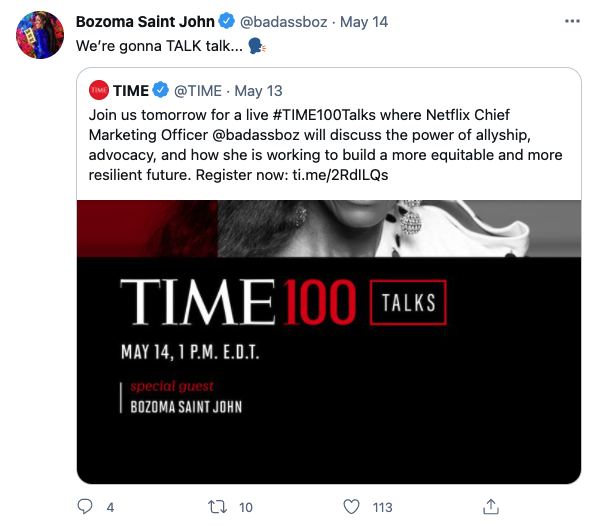If you build it, they will come.
A succinct yet powerful statement that’s been prominently referenced for nearly four decades, since we all heard the hauntingly inspiring whispers in 1989’s “Field of Dreams.” But unlike a magical baseball diamond in Iowa where the masses unwittingly flock, social media is a different animal entirely. However, if you think about those now famous words through the lens of starting or using social media, it couldn’t be more accurate—especially for brands and the executives who lead them.

Social Media: A Storytelling & Engagement Channel
The truth is social media success revolves around building an engaged community—building being the keyword here. It takes work. But when it’s done right, it can also work for you.
In fact, 93% of consumers believe that CEO engagement on social media helps communicate company values that, in turn, shape a company’s reputation. What’s more, according to a recent report by the Brunswick Group—spotlighting how executives should adapt to a world that now demands authenticity, transparency, accessibility and leadership—employees prefer to work for a CEO who uses digital and social media by more than a 5 to 1 ratio, and that 60% of employees research a CEO’s social media accounts when considering employment at a company.
“93% of consumers believe that CEO engagement on social media helps communicate company values that, in turn, shape a company’s reputation.”
The Power of Executive Thought Leadership on Social
Social media is more than vanity metrics and cutesy videos of dogs and cats. It’s the way over 3.6 billion people (and growing) connect, communicate, learn and engage, and that number is anticipated to grow to 4.41 billion by 2025.
For brands and executives, that creates an incredible opportunity to directly connect not only with current employees, customers, and partners, but also with a world of potential prospects—meeting them where they are. Additionally, beyond being a powerful channel to amplify thought leadership, when used in strategic alignment with other corporate communications channels—like public relations, marketing and even sales—social media can help executives tell a holistic brand story to build awareness and even help grab market share.
“Beyond being a powerful channel to amplify thought leadership, when used in strategic alignment with other corporate communications channels—like public relations, marketing and even sales—social media can help executives tell a holistic brand story to build awareness and even help grab market share.”
Fostering Transparency Through Executive Social Strategies
Beyond business KPIs, CEOs can bolster stronger transparency efforts via social media, helping them embrace their vulnerability and not hide behind a title—i.e., humanize how others view them.
In fact, one-third of consumers say they would purchase more from brands whose CEOs demonstrate transparency on social. And executives, especially the CEO, who are known for setting the tone for the entire business, can be intimidating for some. But with social media, employees, customers, partners and prospects alike can better understand what these executives are about; how they view the industries they serve and even the world around them. By setting an example of openness, Sprout Social agrees that “CEOs can lead the charge in empowering their employees to share and advocate authentically for the brand on social.” It’s like having a gigantic microphone for potentially billions of people to hear what you have to say!
That said, it’s important to keep in mind that a social media feed is a carefully curated personal world, which those who use it take pride in—only following things and people whom interest, inspire, educate and motivate them. So, when an executive on social media gains a follow, it’s because that follower cares about what they have to say and wants to hear and learn more from them.
Here are a few incredible executive examples who know what it means to share their voice and build an engaged community that’s adding value:
- Gary Vaynerchuk, CEO of VaynerMedia
- Bozoma Saint John, Global CMO of Netflix
- Mark McClain, CEO & Founder of SailPoint Technologies
- Melanie Perkins, Co-Founder & CEO of Canva
“Social media is a place where people discuss life, news and industries, connect and celebrate with family, friends and colleagues, and share opinions and personal experiences with brands they buy from and businesses where they work.”
As a baseball fan it saddens me to say that social media has become the world’s pastime, but it’s a fact that cannot be denied. Social media is a place where people discuss life, news and industries, connect and celebrate with family, friends and colleagues, and share opinions and personal experiences with brands they buy from and businesses where they work. Not being on social media at this point is likened to not having a smartphone. But in all honesty, not being on social media as a business executive is a missed opportunity. Not only to help further your business brand, but your personal brand.
So, why not join the conversation? You just might hit it out of the park.
Want to learn more about how an executive social strategy fits into your brand storytelling efforts? Download our guide.





